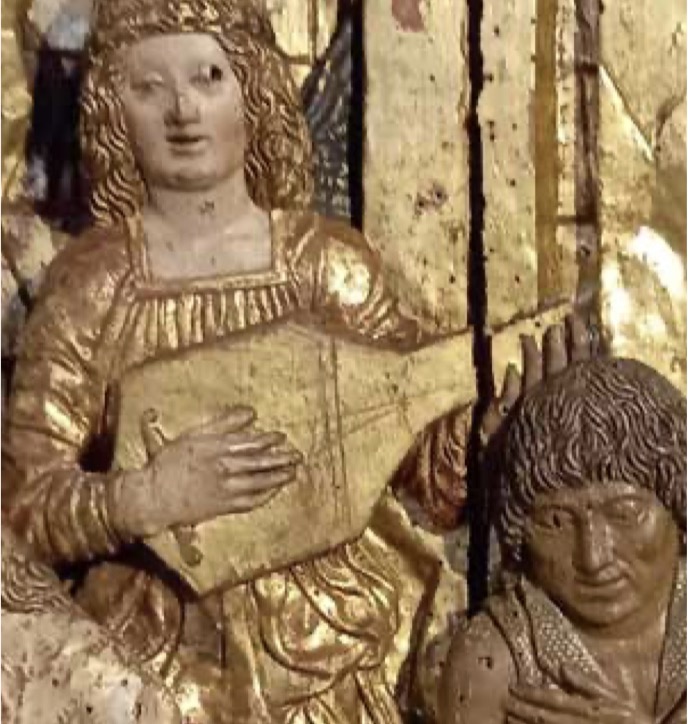Vihuelist in the “Nativity” (Natività) of the Master of Trognano
(1481-1490) - Milan, Castello Sforzesco, museum
instrument: viola da mano (vihuela) | century: 15cent/3/late | catalogue nº: 15-366

Artwork
Creator
Medium Artwork: Sculpture
Location
City Trognano | Region Italy | Old kingdom Italy
Characteristics
| Body Straight | Strings None | Neck Medium | Pegbox None |
| Bridge Fixed | Frets No | Back Flat | Pegs None |
| Technique Plucked fingers thumb in |
Commentary
ARTWORK
Gilded and polychrome wooden scultpure of the Nativity carved in Populus alba wood, measuring 165 x 120 x 15 cm. It is attributed to the Master of Trognano (Giovanni Pietro and Giovanni Ambrogio De Donati?), and creeated after 1481 - 1490 approx. Currently located in the Museo dei Mobili e delle Sculture lignee, Castello Sforzesco, Milan, Italy, faving been acquired in 2004 from the "Golgi-Redaelli", Personal care.
On the website Google Arts & Culture website listed below, it is described in detail: “This wood relief sculpture was located above a door inside a hall of the Oratory of San Giuseppe a Trognano (Pavia). In the context of Renaissance Lombard sculpture, its excellent quality is worthy of note. It is thought that the work was part of an altarpiece (perhaps dedicated to the cult of St. Joseph) of which to date no other fragments have come to light. The subject of the scene, set in a ruined building, is the Nativity, viewed against the motif of a dilapidated straw roof viewed from the front, with great architectural ruins in the background. The thatched roof isdepicted in great detail, with a large gap revealing the beams and raftersunderneath (a recurring theme in Lombard wooden sculptures). Above the roof, two angels hold a cartouche with the words “Gloria in excelsis deo". In the background, at the top of the wall made of roughly hewn stones, there is an oculus, seen in perspective, indicating that the sculptor knew and accepted "modern" architecture as interpreted by Bramante...
INSTRUMENT
Apparently flat backed, this oblong instrument is possibly an attempt to depict a vihuela de mano, or something similar, yet to be identified. The absence of further detail in the sculpture makes it difficult to be more specific about its nature, although it does have a clearly lute-like bridge, wide enough for at least six courses of strings, and played with a thumb-under technique similar to Italian depictions of lutes in the period 1480-1520.
IMAGE
Lute News 143 (October 2022), Ezine, p. 86. Photographer not named. It is also on the webpage specified below.